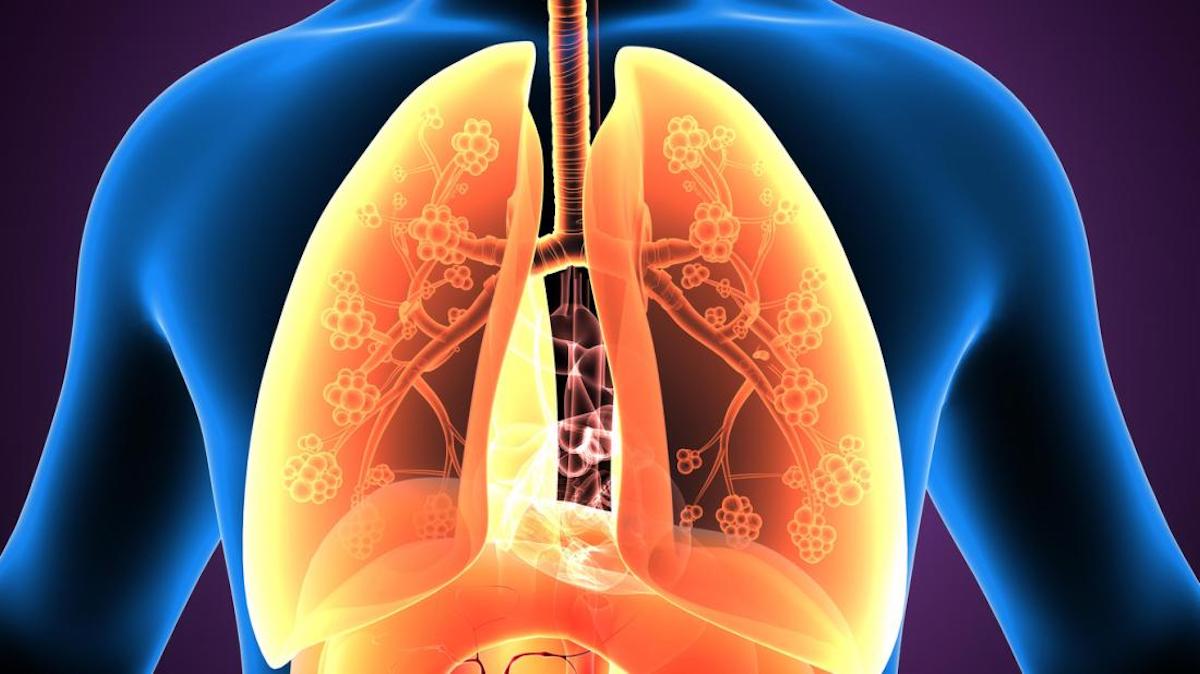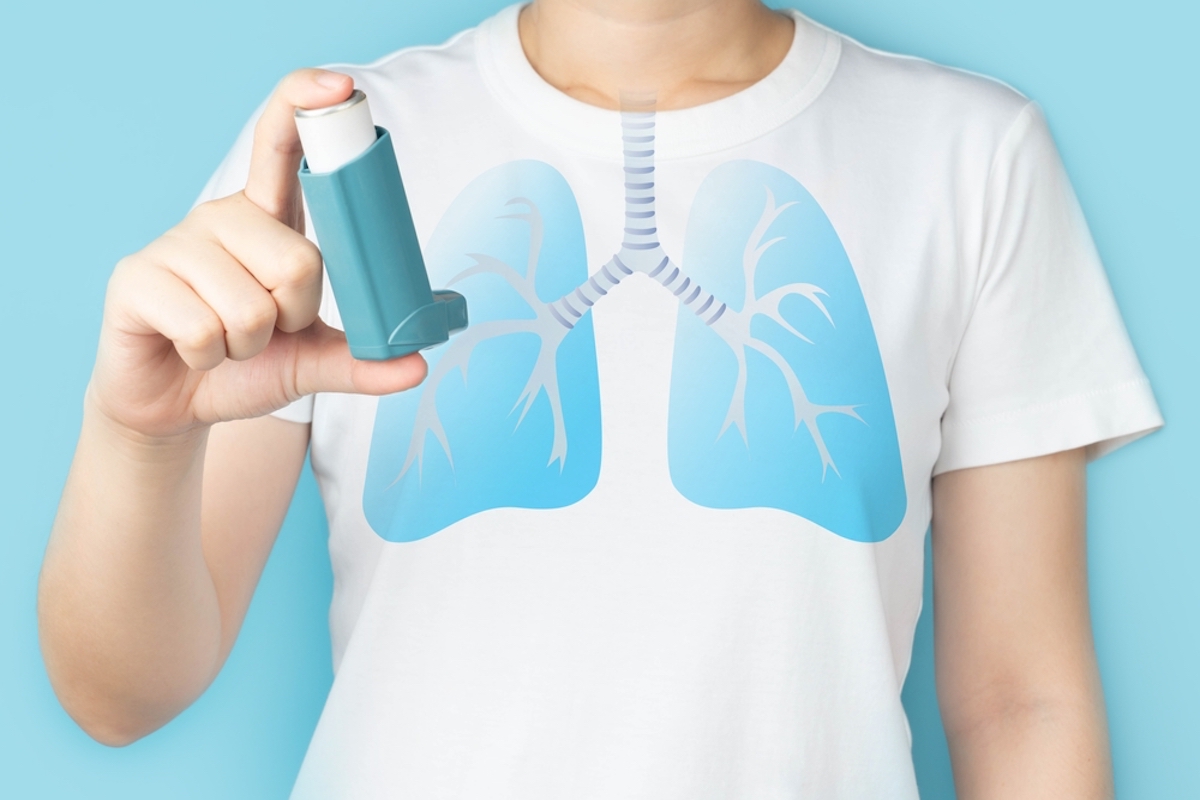Eosinophilic asthma is a subtype of asthma and is a significant concern in the United States. Exact prevalence figures vary, it is estimated that a substantial number of asthma cases in the U.S. fall under the eosinophilic asthma category. This makes it crucial for everyone to know how you can recognize and treat this respiratory disease.

What Is Eosinophilic Asthma?
Eosinophilic asthma is a type of asthma where a certain kind of white blood cell called “eosinophils” plays a big role in causing breathing problems. These eosinophils can make the airways in your lungs swollen and narrow, making it hard to breathe. Let’s break it down step by step:
- Normal airways: in healthy lungs, air moves in and out smoothly through airways, which are like tubes. The airways are relaxed and open, allowing you to breathe easily.
- Eosinophilic asthma: in eosinophilic asthma, there’s a problem. Your immune system, which normally fights off infections and allergies, gets a little too active in your lungs.
- Eosinophil invasion: your immune system sends a type of white blood cell called eosinophils into your airways. These eosinophils are like soldiers, and they go to the airways to fight something they think is harmful, like allergens or irritants.
- Inflammation: the eosinophils release substances that cause inflammation in your airways. Inflammation is like a swelling or irritation, and it narrows the airways, making them smaller.
- Airway tightening: as the airways get swollen and narrower, it becomes harder for air to flow in and out. This leads to common asthma symptoms like coughing, wheezing, and shortness of breath.
How Is Eosinophilic Asthma Caused?
There are two main types of eosinophilic asthma. This also explains how this type of asthma is caused:
- Allergic Eosinophilic Asthma: this happens when allergies, like pollen or dust, trigger your immune system to produce too many eosinophils, causing asthma symptoms.
- Non-Allergic Eosinophilic Asthma: this type isn’t caused by allergies. It might be because of things like pollution or infections.
You’re at risk for eosinophilic asthma if you have allergies to things like pollen or pets, a family history of asthma or allergies, regular exposure to pollution or smoke, other health issues like sinus problems, or nasal polyps. Keep in mind, these factors can increase your chances, but not everyone with these risks will develop the condition.

Symptoms of Eosinophilic Asthma
One of the most common signs is a persistent cough that doesn’t seem to go away, especially at night or early in the morning. This cough may be dry or produce mucus. Another common symptom is wheezing. This is a high-pitched whistling sound when you breathe, and it often happens when you exhale. Other symptoms may include:
- Shortness of breath, especially during physical activities or at night.
- Chest tightness or discomfort.
- Increased mucus production.
- Difficulty in breathing, which can worsen during asthma attacks.
- Difficulty sleeping due to coughing or breathing problems.
- Coughing or wheezing triggered by allergens or irritants.
Stages of Eosinophilic Asthma
The severity of eosinophilic asthma varies, and it’s categorized into different stages based on the frequency and severity of symptoms, as well as the level of lung inflammation. To make it easier to understand, we’ve created the following overview:
| Stage | Description | Common Symptoms |
|---|---|---|
| Mild Eosinophilic Asthma | Occasional asthma symptoms, minimal lung inflammation | Intermittent wheezing, coughing, shortness of breath |
| Moderate Eosinophilic Asthma | More frequent symptoms, increased lung inflammation | Frequent wheezing, coughing, shortness of breath, chest tightness |
| Severe Eosinophilic Asthma | Persistent and severe symptoms, high lung inflammation | Frequent and severe wheezing, coughing, shortness of breath, chest tightness |
Diagnosis & Treatment Options
Diagnosing eosinophilic asthma involves a thorough evaluation, including a medical history review, physical examination, and lung function tests. Blood or sputum tests may be conducted to measure eosinophil levels, while allergy testing can identify potential triggers.
Fortunately, eosinophilic asthma is treatable. While it may not be completely curable, the condition can be managed effectively with the right treatment plan. Treatment options are:
- Inhaled corticosteroids (ICS): Short-acting bronchodilators like albuterol can provide quick relief from asthma symptoms by relaxing the airway muscles.
- Biologic therapies: for severe eosinophilic asthma, biologic medications like omalizumab, mepolizumab, or benralizumab may be prescribed to specifically target eosinophils and reduce inflammation.
- Leukotriene modifiers: medications like montelukast can help manage asthma symptoms by blocking leukotrienes, which can cause inflammation.
- Oral corticosteroids: in severe cases or during exacerbations, oral corticosteroids like prednisone may be prescribed for a short period to control inflammation.
- Allergen avoidance: if allergies trigger your asthma, avoiding allergens like pollen, dust, or pet dander can be part of the treatment plan.
- Lifestyle changes: these may include smoking cessation, maintaining a healthy weight, and regular exercise to help manage asthma symptoms.
- Immunotherapy: allergy shots (immunotherapy) may be recommended for individuals with allergic triggers to reduce sensitivity over time.
It’s important to seek treatment options that suit you, that’s why you should always do your own online research. To make it easier for you, start your online search here:

